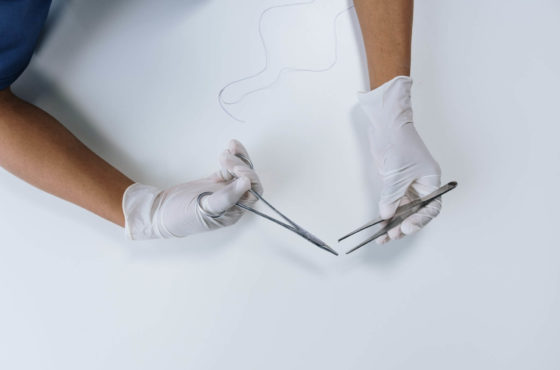staplers have been around for more than 50 years. Heavily marketed as time savers, health care professionals prefer to rely on this because it has been known to provide convenience in closing wounds and incisions.
Lately, however, staplers have been linked to a number of serious and due to manufactured by companies.
In fact, this has been the target of many lawsuits recently filed in the United States.
Plaintiffs who have filed a claim that a can potentially fail or malfunction, causing and even death to a .
Why are staplers becoming a cause for concern in the medical field? Just recently, misuse of staplers even topped ECRI Institute’s list of technology hazards.
Read on to learn more about and find out why news about this has been making the rounds lately.
What Types of Injuries Do Malfunctions Cause?
A during can cause or complications including , infection at the incision site, damage to or tearing of and , sepsis, blood loss, fistula or an abnormal connection between and organs, increased risk of , and even death.
These or complications are due to instances of , misuse, and misfiring. These problems can result in which puts the at risk of additional because of being under the effect of anesthesia longer than what was originally planned.
This is often used in minimally invasive surgeries as it is meant to both cut and and quickly seal them afterwards.
However, in some cases, staplers can gravely harm a when it fails to fire or seal a . This can result in massive bleeding or infections.
And the numbers speak for themselves:
According to the Manufacturer and User Facility Device Experience (MAUDE) Database of the U.S. Food and Drug Administration, over 41,000 were received by the agency on and , including:
- 366 deaths
- 9,000 serious injuries
These numbers, however, only represent what the FDA has admitted in public. According to an investigative report by Kaiser Health News, over 56,000 filed by several were not disclosed to the public.
An FDA spokesperson tried to defend the hidden database by saying that its purpose was to allow the FDA to “more efficiently review adverse events and take action where warranted without sacrificing the quality of our review or the information we receive.”
However, this hidden database made it difficult for health care providers to assess in using the for .
Misuse Tops Technology Hazards Report for 2020
The ECRI Institute is an independent health safety group that maintians a database of hospital-reported .
The nonprofit recently released its Top 10 Technology Hazards report, where it identified misuse as the number 1 health technology concern of 2020.
The reason why it topped the list?
Because of the FDA’s analysis of incidents in their database. Out of the large range of numbers that we mentioned earlier, 75 of those accidents were investigated by the ECRI.
Most of the cases that the group investigated were due to the complexity of using the . For instance, surgeons need to accurately choose the correct size of staple for the type of they are going to work with in a .
Moreover, staplers used in a laparoscopic are meant or designed to staple together and cut in between the staple line. If that line isn’t closed, it could result in leakage.
“Injuries and deaths from the misuse of staplers are substantial and preventable,” ECRI Institute CEO Dr. Marcus Schabacker said in a statement. “We want hospitals and other medical institutions to be in a better position to take necessary actions to protect patients from harm.”
Reports of Malfunctions
According to the FDA, achieving a proper staple line depends on the function and proper use of the .
If in case, the staple line is incomplete, bleeding at the incision site and reopening of the wound may be possible.
The most common malfunctions from staplers reported to the FDA include:
- misfiring
- difficulty in firing
- failure of the to fire the
- opening of the staple line at the wound site
- using the wrong size of staple to
- application of staples to the wrong
- malformed staples that create incomplete seals
These malfunctions may cause more which may require a to undergo . These accidents may also be life threatening as the may eventually bleed out and die when a is left open.
Recall
There has been a number of recalls on a number of which were found to be unsafe.
The most recent one, however, was made by the company in 2019 when it pulled off the Intraluminal from the market due to insufficient firing and failure to completely form staples.
The recall affected 92,496 intraluminal staplers manufactured and distributed from March 6, 2016 until May 8, 2019.
The FDA designated the recall as Class I, which means that the particular causes serious side effects and dangers, even death.
Another , Covidien, a subsidiary of Medtronic, where part of the majority of staplers used in American hospitals come from, is speculated to be aware of the problems associated with staplers, yet reports of serious injuries keep coming with the continuous use of in medical facilities.
All in all, between 2013 and 2019, manufacturers have pulled off more than 3.4 million staplers and staples from the market, including cartridges and components.
reports ranged from defects that resulted in injuries to defective designs of the devices caught by the companies during manufacturing.
What You Can Do
According to lawsuits brought to the attention of the court, plaintiffs accuse companies of manufacturing the potentially faulty , citing its defective designs.
Various reports of support this claim. The manufacturers, however, like to point the blame at health care providers and would turn a blind eye to the and staplers.
If you or your loved one suffered from side effects of a that needed , or sustained injuries related to , then you can contact us for a free case evaluation. If you qualify for a case, we may be able to connect you with a who can help you file a today.



